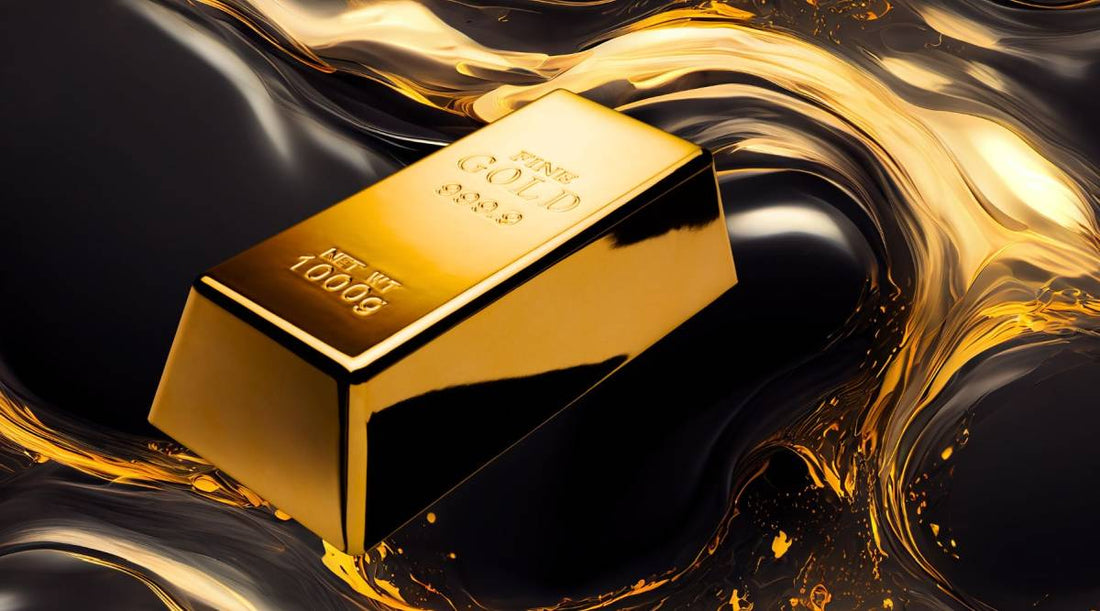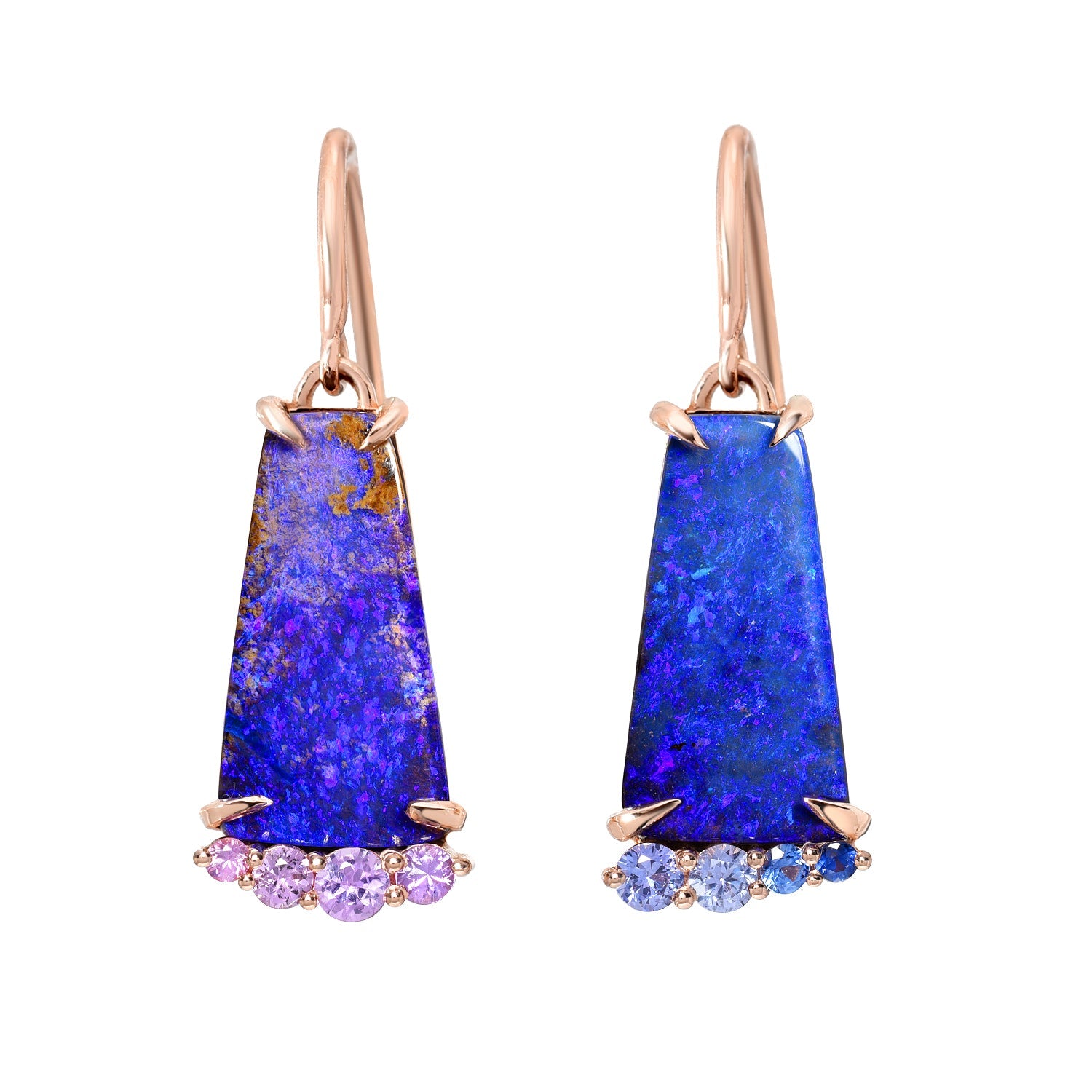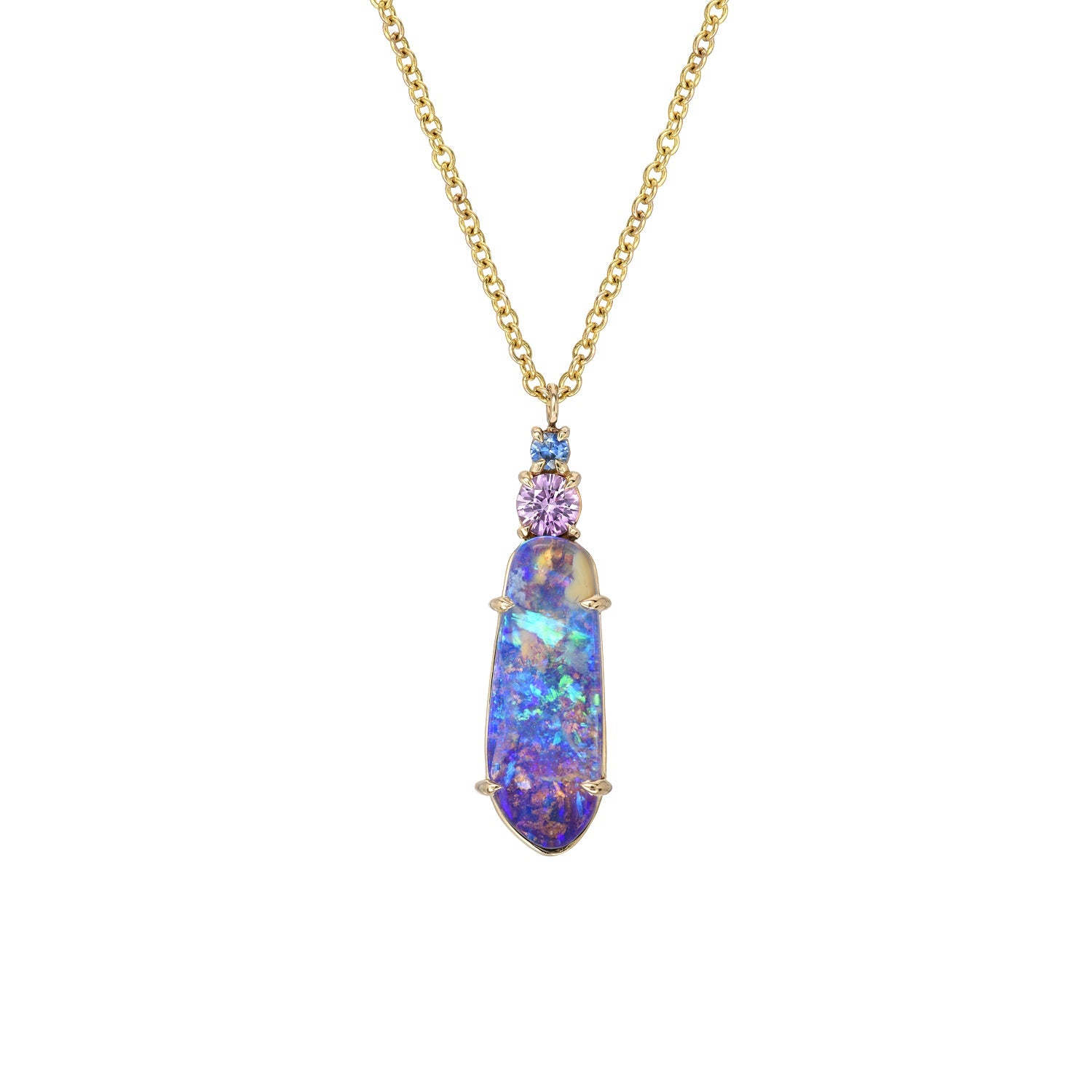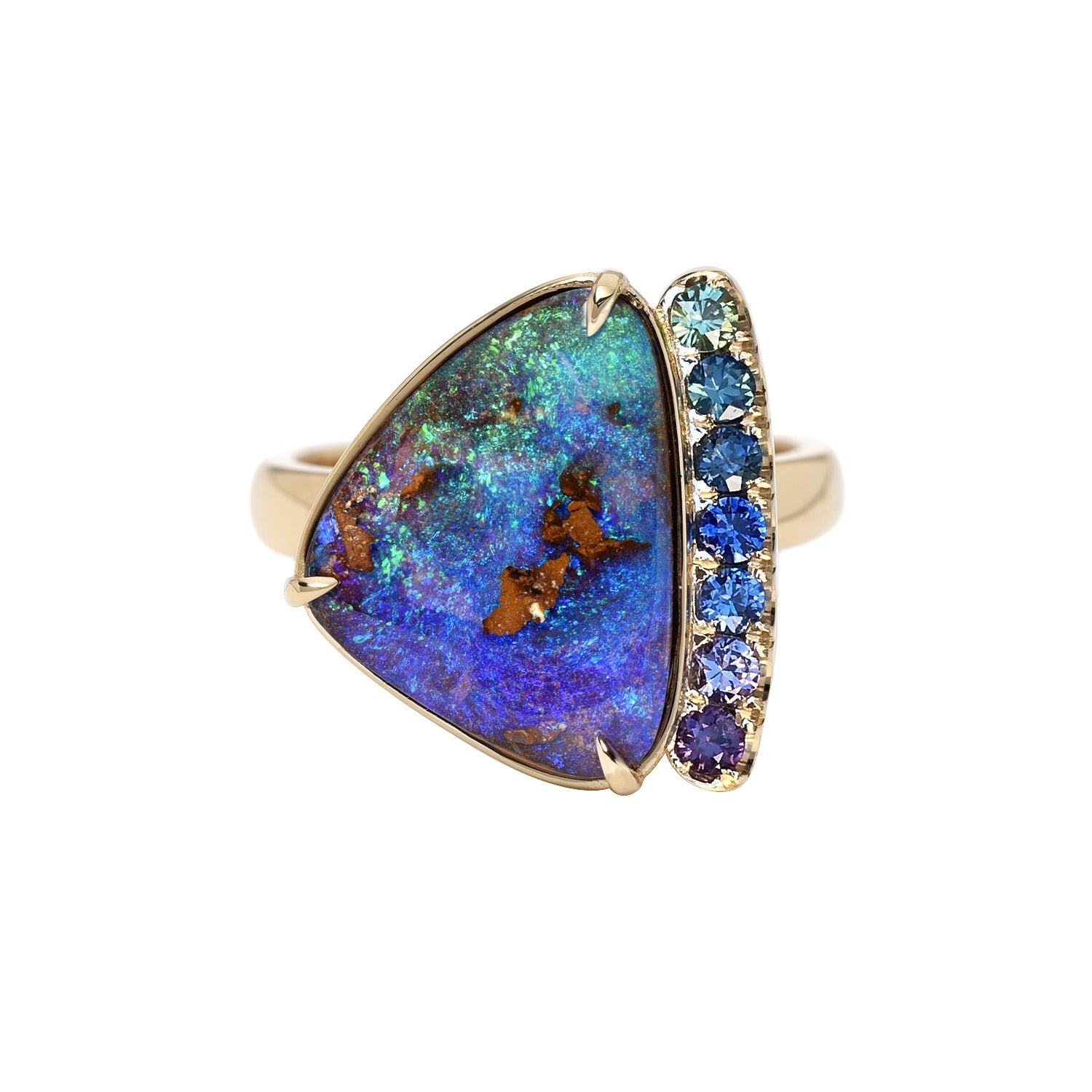
Gold --- The Gold Standard
luis gomezShare
Opal might be our bias when it comes to jewelry — the gemstone that most fascinates us, and the pulse of the NIXIN Brand — but that doesn’t mean we can’t be captivated by other gemstones, other natural wonders, other metallurgic eye-openers. Opal shines on its own, right out of the earth, but with just the right adornments, its beauty can be elevated in the most arresting ways. And a gemstone as breathtaking as Opal deserves equally striking elements to accompany it. That is why at NIXIN we are all about cradling our Opals in gold. In this article we’re going to tell you about the properties of gold, how it’s rated, and what type to look for. All you need to know about gold.
What Is Gold?

Gold is a natural chemical element - a metal - with the symbol Au, for aurum, and the atomic number 79. Gold is naturally a dense, malleable and soft medium. These characteristics make it one of the most ductile metals in existence.
Gold most often occurs in native form, as nuggets or grains found in rocks, deposits, and mining veins. Though exact figures fluctuate with sources citing anywhere from 36-78%, there’s no doubt that much of the world’s gold is allocated to the jewelry industry — the rest is divided between other industries and markets; some is employed in electronics, medical and dental products, and it is also relied upon as a financial tool.
Historians claim the word “gold” is most likely rooted in Indo-European origin. It is derived from the word “ghel”, meaning yellow. Meanwhile, the periodic table symbol for gold, Au, is short for arum, which (besides gold) means “glowing dawn.”
Collectively, India and China consume more than 50% of the world’s gold. There is greater demand in these regions for jewelry made of higher karat gold than is typical in other parts of the world, such as the United States. In 2013, the gold demand by these two countries alone amounted to over 800 tonnes of gold, each, and it’s possible these figures are higher today.
Properties of gold
From both a chemical and economical standpoint, no other metal or mineral quite measures up to gold. It’s a one-of-a-kind ore that is known worldwide for its inherent value, unique qualities and remarkable beauty. Today, gold is one of the most precious metals in existence due, not only to its beauty but also to its natural qualities.

Qualities such as:
- Gold is a great heat and electrical conductor — and unlike other conductors, it does not tarnish or rust over time. This quality also makes it desirable for use in jewelry.
- Gold is ductile — an ounce of gold can be drawn into 50 miles of thin wire. It is extremely malleable.
- Gold is reflective — for example, an astronaut's visor receives a thin coating of gold. This minuscule film, which is almost transparent, reduces glare and heat from the sun and protects their eyesight.
- Gold is malleable — metalsmiths and jewelers value gold’s pliability. It is extremely easy to emboss, hammer, cast, melt, stretch, texture, and polish. In comparison, platinum is a much harder metal to work. Gold can be flattened into extremely thin sheets, almost the weight and width of a piece of paper. For example, a 300 square foot room can be covered in gold leafing - all the way - with nothing more than 3 ounces of gold metal — that’s the equivalent of 3 coins, roughly the size of a silver dollar.
- Gold is strong — gold is resistant to most acids.
- Gold is rare — gold is a precious metal, one of the rarest in recorded history. In the past, a gold standard was implemented as monetary policy; our currency and its value had a direct relationship to gold. As prices were fixed for gold, it established a value for currency.
Gold, aside from its commodity status and its use in jewelry, is also incredibly attractive - due to its properties - to tech-heavy industries. Gold can be used for a range of applications such as infrared shielding, for glass production, for dental inlays, and although the subject is controversial, some believe in the use of gold salts, in small doses, for reported anti-inflammatory properties and medical purposes.
Celestial Asymmetrical Gold Diamond Wedding Band
Types of gold
Nothing really catches the eye like gold, but, did you know that there are many deviations of it?
Pure Gold
Pure 24-karat gold is 100% gold and harbors no other trace metals within. In the market, it may also be referred to as 99.0% to 99.9% pure gold. It is a rich yellow-colored metal. Nevertheless, since it is incredibly soft and malleable, it’s not practical for use in jewelry or modern consumers. You can bend pure gold with your fingers and even scratch it raw with a nail — gold is not reliable in 24-karat to maintain its form or keep set stones secure.
Yellow Gold Alloys
Yellow gold alloys look similar to pure gold but incorporate other base metals like silver and zinc to make the finished piece stronger. Jewelry made from gold alloys is more durable, and with the right design, can be worn every day. Many engagement and wedding rings, as well as watches, and mementos passed down from generation to generation, are made of yellow gold alloy. In the US, the most common alloy is 14-karat gold — this means that it is roughly 58% pure gold, fused with 42% of other, typically stronger metals. The more muted its hue, the less pure gold a piece of jewelry likely has. Regardless of the alloy breakdown, it is still normal for gold to show wear over time, and it can usually be touched up by a jeweler with a simple refinishing.
Colored Gold Alloys
Like yellow gold alloys, other colored gold alloys are achieved by mixing gold with different metals which in turn influences the final color of the product. The most common types in existence are rose gold and white gold. White gold has a pale silvery appearance because it is mixed with white metals such as palladium, platinum, manganese, zinc, or nickel.

Woven diamond eternity band - 14k white gold
When someone has an allergic reaction to gold, more often than not, it’s white gold — more specifically it’s usually due to the nickel content in the white gold alloy. If you’re getting engaged and have never worn white gold before, it’s worth testing an inexpensive white gold item prior to making a considerable investment. Meanwhile, rose gold gets its distinctive rosy pink hue from blending gold with copper. There’s also a form of green gold, which is less common, that can be created by combining gold with copper, silver, and zinc. Every caster has their own unique formula for their alloys, so it’s reasonable to expect slight nuances in gold from various sources.
Gold can be classified by its color or its karat. In the United States, you will most likely see the following:
- 24 karat: pure 99.9% gold.
- 18 karat: 75% pure gold and 25% other metals.
- 14 karat: the one most used for jewelry, 58.3% gold with 41.7% other metals, give or take.
- 10 karat: the lowest standard of gold historically sold in the United States. It has only 41% gold. Nevertheless, it is extremely durable, if a bit more muted in appearance.
At NIXIN Jewelry, gold is our preferred precious metal to work with as it adds complementary color to our Opals and offers a beautiful framework of support for our stones. Come explore our collection and JOIN our Insiders to see what really inspires our creations.





